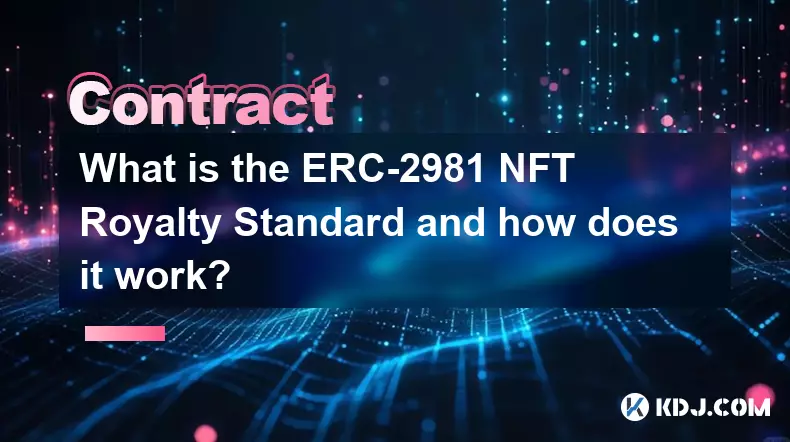-
 bitcoin
bitcoin $95122.959084 USD
-0.06% -
 ethereum
ethereum $3142.532402 USD
-0.28% -
 tether
tether $0.999439 USD
0.01% -
 xrp
xrp $2.209207 USD
-2.80% -
 bnb
bnb $925.395975 USD
0.07% -
 solana
solana $138.662599 USD
-1.73% -
 usd-coin
usd-coin $0.999753 USD
-0.02% -
 tron
tron $0.294100 USD
0.03% -
 dogecoin
dogecoin $0.161321 USD
0.35% -
 cardano
cardano $0.498672 USD
-1.53% -
 hyperliquid
hyperliquid $38.406659 USD
1.34% -
 zcash
zcash $679.663571 USD
5.44% -
 bitcoin-cash
bitcoin-cash $501.381807 USD
3.53% -
 chainlink
chainlink $13.975571 USD
-0.64% -
 unus-sed-leo
unus-sed-leo $9.166130 USD
-0.37%
What is the CREATE2 opcode and how does it enable deterministic contract addresses?
CREATE2 enables predictable contract addresses in Ethereum, allowing off-chain systems to reference contracts before deployment.
Nov 13, 2025 at 11:40 pm

Understanding the CREATE2 Opcode in Ethereum
1. The CREATE2 opcode was introduced in Ethereum through EIP-1014 during the Constantinople upgrade. It serves as an alternative to the traditional CREATE opcode, which deploys smart contracts using a sender's nonce to determine the resulting contract address. Unlike CREATE, CREATE2 allows developers to calculate a contract’s address before deployment by factoring in specific inputs other than the nonce.
2. This functionality is crucial in scenarios where predictability of contract addresses is necessary. For instance, off-chain systems or layer-2 solutions may need to reference a contract that hasn’t been deployed yet. By enabling pre-computation of addresses, CREATE2 supports trustless interactions and improves coordination between decentralized components.
3. The structure of the address generated by CREATE2 relies on a cryptographic hash involving four elements: the deployer’s address, a user-defined salt (a 32-byte value), the bytecode of the contract (also known as init_code), and the keccak256 hash of that bytecode. Because none of these inputs depend on the sender’s transaction count, the same combination will always yield the same address.
4. One significant advantage of this mechanism is the ability to deploy contracts conditionally. A contract can be deployed only if certain conditions are met, yet its future address remains known in advance. This enables use cases such as counterfactual instantiation, where applications assume the existence of a contract at a known location even before it is live on-chain.
Deterministic Address Generation Explained
1. Deterministic contract addresses mean that given the same set of inputs, the output address will always be identical. With CREATE2, the formula used is keccak256(0xff + address + salt + keccak256(init_code))[12:]. The prefix 0xff ensures namespace separation from addresses created via CREATE, reducing collision risks.
2. The salt parameter plays a critical role. It is chosen by the developer and can encode meaningful data such as user identifiers, timestamps, or application-specific keys. As long as the salt and other components remain unchanged, redeploying the same bytecode from the same creator address results in the exact same destination.
3. Because the address depends on the hash of the initialization code rather than runtime code, any change in the constructor arguments or compiled bytecode alters the final address. This makes deployments highly sensitive to compilation details, requiring careful version control and reproducible builds.
4. Developers often leverage deterministic addressing for wallet factories, where each user gets a uniquely derived smart contract wallet. These wallets can be anticipated off-chain, allowing transactions to be routed correctly even before deployment occurs.
Applications in Decentralized Finance and Layer-2 Systems
1. In decentralized exchanges and automated market makers, CREATE2 facilitates the creation of pools with predictable addresses. This simplifies integration for frontends and bots, which can query pool data without waiting for event logs or relying on registries.
2. Layer-2 scaling solutions like state channels and rollups utilize CREATE2 for counterfactual contract deployment. Participants in a channel can interact with a virtual contract instance, knowing precisely where it would reside if ever materialized on-chain. This reduces on-chain footprint while preserving security guarantees.
3. Smart contract wallets such as those compliant with ERC-4337 (account abstraction) rely on deterministic addresses to enable seamless user experiences. Users can receive funds to their future wallet address before it exists, because the funding transactions target the precomputed location.
4. Another use case involves upgradeable proxy patterns where the implementation contract is deployed deterministically. Although proxies typically use CREATE, combining them with CREATE2-based factories enhances modularity and auditability across deployments.
Frequently Asked Questions
Q: Can CREATE2 be used to deploy the same contract multiple times at the same address?A: No. If a contract already exists at a computed CREATE2 address, attempting to deploy another contract there will fail. The EVM prevents overwriting existing code, ensuring immutability once an address is occupied.
Q: How does the salt value affect security in CREATE2 deployments?
A: The salt must be chosen carefully. Predictable salts may allow attackers to pre-deploy malicious contracts at expected addresses. Using secure randomness or unique identifiers mitigates this risk, especially in permissionless environments.
Q: Is CREATE2 more expensive than CREATE in terms of gas?
A: Yes. CREATE2 generally consumes more gas due to the additional hashing operations required to compute the deterministic address. The exact cost depends on the size of the init_code and network conditions at the time of deployment.
Disclaimer:info@kdj.com
The information provided is not trading advice. kdj.com does not assume any responsibility for any investments made based on the information provided in this article. Cryptocurrencies are highly volatile and it is highly recommended that you invest with caution after thorough research!
If you believe that the content used on this website infringes your copyright, please contact us immediately (info@kdj.com) and we will delete it promptly.
- XRP ETFs and Volume: A New Era or Fleeting Hype?
- 2025-11-16 23:10:01
- Pi Network, Litecoin, XRP: Navigating the Crypto Landscape in 2025
- 2025-11-16 23:05:01
- Pi Network, DeFi Mainnet, and Crypto Web3: A New Era Dawns
- 2025-11-16 23:05:01
- XRP Price, Ripple, and Wall Street: A New Era?
- 2025-11-16 23:00:01
- ICP Price Prediction 2025: Will Internet Computer Reverse Course?
- 2025-11-16 23:00:01
- NYC Installations Meet XRP ETF Buzz: A Grayscale Story
- 2025-11-16 22:55:01
Related knowledge

What is a Denial of Service (DoS) attack in a smart contract and what are its common forms?
Nov 10,2025 at 05:20am
Understanding Denial of Service in Smart Contracts1. A Denial of Service (DoS) attack in the context of smart contracts refers to a scenario where a m...

What is a cryptographic nonce used for in transaction signing?
Nov 11,2025 at 05:59am
Understanding Cryptographic Nonces in Blockchain Transactions1. A cryptographic nonce is a random or pseudo-random number used only once in the contex...

How does inheritance work in Solidity smart contracts?
Nov 11,2025 at 10:40pm
Inheritance in Solidity: Building Modular Smart Contracts1. Inheritance in Solidity allows one contract to adopt the properties and functions of anoth...

What is the difference between an Externally Owned Account (EOA) and a Contract Account?
Nov 13,2025 at 04:00am
Understanding Externally Owned Accounts (EOA)1. An Externally Owned Account is controlled directly by a private key, which means only the holder of th...

What is the ERC-2981 NFT Royalty Standard and how does it work?
Nov 13,2025 at 05:39am
Understanding the ERC-2981 NFT Royalty Standard1. The ERC-2981 standard is a proposed Ethereum Request for Comment that introduces a royalty mechanism...

What is a sandwich attack in DeFi and how does it exploit transactions?
Nov 15,2025 at 06:39pm
Understanding Sandwich Attacks in Decentralized Finance1. A sandwich attack is a form of front-running and back-running manipulation commonly observed...

What is a Denial of Service (DoS) attack in a smart contract and what are its common forms?
Nov 10,2025 at 05:20am
Understanding Denial of Service in Smart Contracts1. A Denial of Service (DoS) attack in the context of smart contracts refers to a scenario where a m...

What is a cryptographic nonce used for in transaction signing?
Nov 11,2025 at 05:59am
Understanding Cryptographic Nonces in Blockchain Transactions1. A cryptographic nonce is a random or pseudo-random number used only once in the contex...

How does inheritance work in Solidity smart contracts?
Nov 11,2025 at 10:40pm
Inheritance in Solidity: Building Modular Smart Contracts1. Inheritance in Solidity allows one contract to adopt the properties and functions of anoth...

What is the difference between an Externally Owned Account (EOA) and a Contract Account?
Nov 13,2025 at 04:00am
Understanding Externally Owned Accounts (EOA)1. An Externally Owned Account is controlled directly by a private key, which means only the holder of th...

What is the ERC-2981 NFT Royalty Standard and how does it work?
Nov 13,2025 at 05:39am
Understanding the ERC-2981 NFT Royalty Standard1. The ERC-2981 standard is a proposed Ethereum Request for Comment that introduces a royalty mechanism...

What is a sandwich attack in DeFi and how does it exploit transactions?
Nov 15,2025 at 06:39pm
Understanding Sandwich Attacks in Decentralized Finance1. A sandwich attack is a form of front-running and back-running manipulation commonly observed...
See all articles

























![Coin Master Hack Spins 2025 ✅ Coin Master Free Spins[ Android _ iOS ] [LINK IN COMMENT] Coin Master Hack Spins 2025 ✅ Coin Master Free Spins[ Android _ iOS ] [LINK IN COMMENT]](/uploads/2025/11/16/cryptocurrencies-news/videos/6919c627821e7_image_120_90.webp)
















































